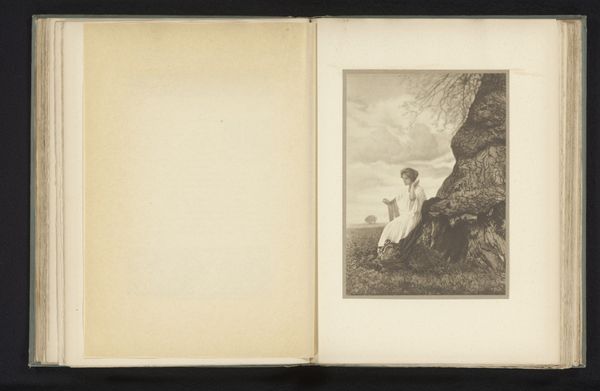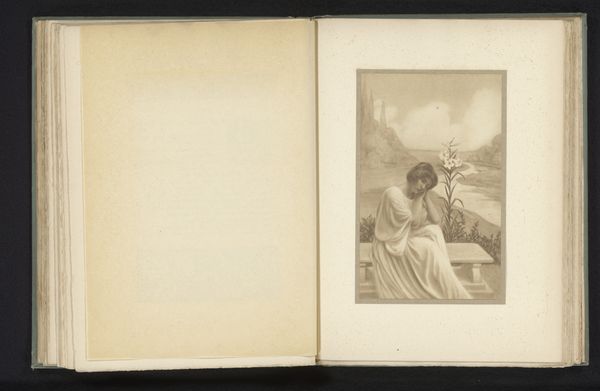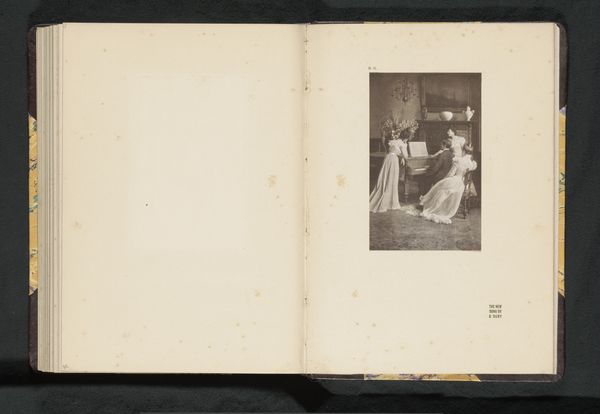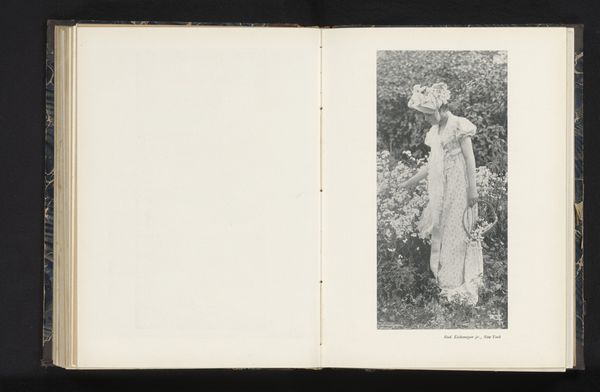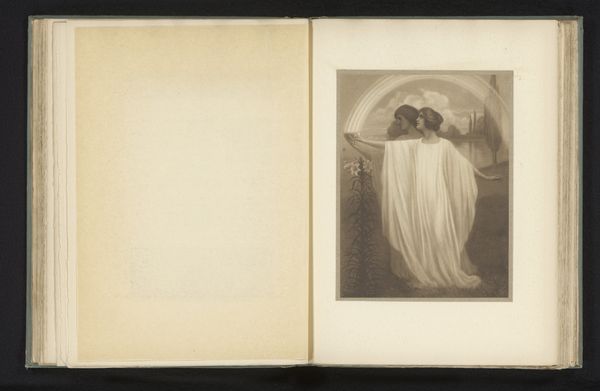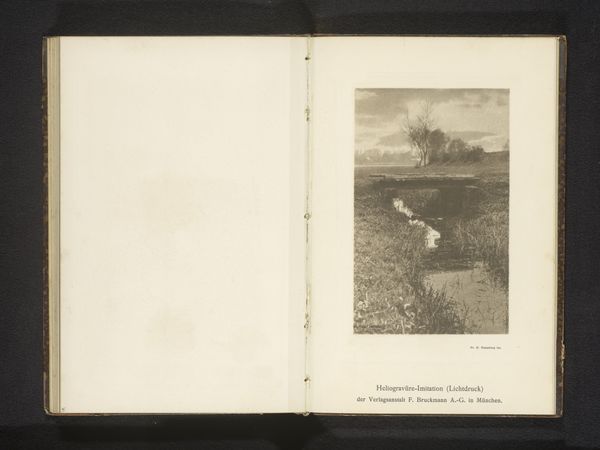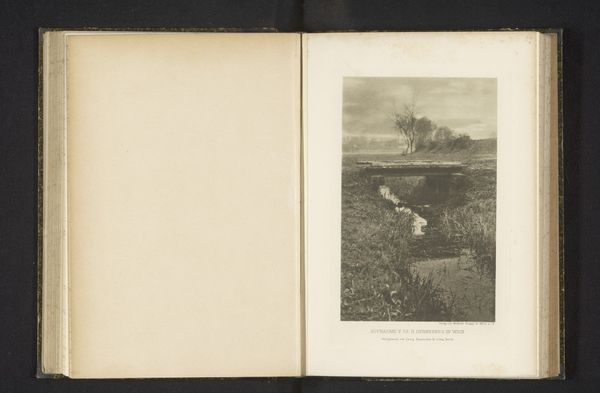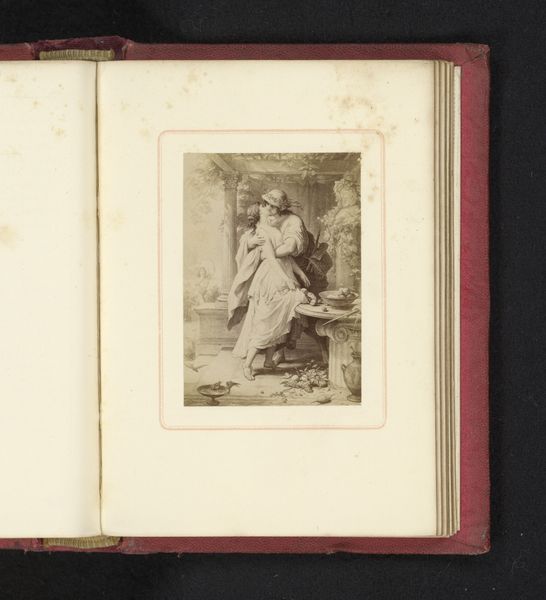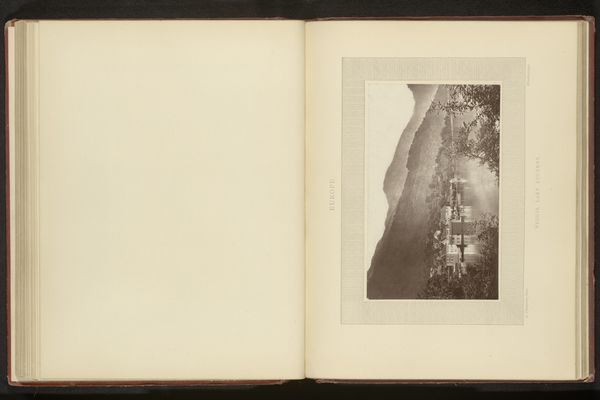
plein-air, photography, gelatin-silver-print
#
portrait
#
plein-air
#
landscape
#
figuration
#
photography
#
gelatin-silver-print
#
symbolism
Dimensions: height 171 mm, width 124 mm
Copyright: Rijks Museum: Open Domain
Curator: Here we have a gelatin-silver print by Adelaide Hanscom Leeson, dating to before 1916, titled "Vrouw met gestrekte armen in een landschap"—"Woman with outstretched arms in a landscape." Editor: My immediate impression is one of freedom, even joy. The composition, with its wide open sky, certainly contributes to that feeling. The monochrome palette is very striking. Curator: Indeed. Let's consider the formal aspects for a moment. Notice the placement of the figure; slightly off-center, allowing the eye to move from the subject outward into the landscape, furthering that idea of expansiveness you picked up on. The tonal range is particularly interesting here as well. Editor: How do you read that tonality? It seems both soft and quite dramatic. I am struck by how the work combines an almost Pre-Raphaelite aesthetic with the techniques of early photography. Curator: The high contrast and depth of field create a dynamic visual space. Adelaide Hanscom Leeson moved among Symbolist and Arts and Crafts circles—both were deeply interested in exploring interior states of mind through exterior landscapes and symbolism. This photograph strikes me as a potent embodiment of those ideals. Editor: And isn’t the clothing also significant? The loose-fitting dress feels classically inspired. I wonder, how were such pieces received publicly, and did her choice to picture women in nature this way align with early feminist movements, especially considering her peers? Curator: Considering Leeson's contemporaries—Anne Brigman comes to mind—the act of depicting women within a landscape was a notable deviation from traditional portraiture, placing them as actors within—rather than simply observers of—their environments. The symbolic use of clothing is further emphasizing this positioning within the landscape, harking back to Romantic depictions of nature as a spiritual source of freedom. Editor: I see that very clearly now—that intentional invocation. To consider the artistic choices around composition and costume gives new weight to what at first appears as simple jubilation. Thank you for drawing those parallels for me! Curator: And thank you for considering its public perception; it certainly deepens one's understanding.
Comments
No comments
Be the first to comment and join the conversation on the ultimate creative platform.
